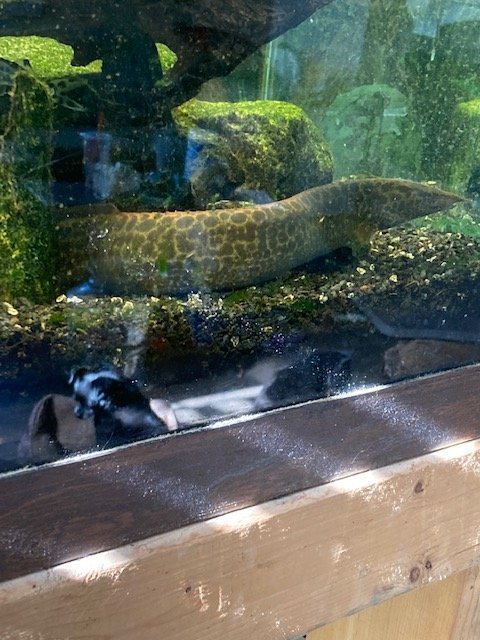Is much known about their wild habitat and natural behaviors of these eels? I have a spotted eel that likes to kinda weave her way around the decor and spends much of her time peeking out of a rock formation. It just made me wonder what kind of habitat they come from. If I had to guess, I bet it is rooting through mud and mulm looking for food, maybe dense vegetation or something similar. Anybody know for sure?
wild habitat of spiny eels
- Thread starter kzimmerman
- Start date
You are using an out of date browser. It may not display this or other websites correctly.
You should upgrade or use an alternative browser.
You should upgrade or use an alternative browser.
Although most are riverine, there are 2 species from Lake Malawi, and over a dozen species from Lake Tanganyka.
They live near shore between rocky and sandy areas, and commonly bury themselves in soft sand.
Those from the African great lakes have evolved to live in hard, high pH water, pH 8 to 9.5.
They live near shore between rocky and sandy areas, and commonly bury themselves in soft sand.
Those from the African great lakes have evolved to live in hard, high pH water, pH 8 to 9.5.
okay, thank you! Anybody have an info as to the habitat of the commonly available spotted eel? Does anybody know the scientific name for this eel? Google search is not giving me the answers for that.
Spotted eel? There are a few spiny eel species that are often marketed with a common name with some reference to spots; unfortunately I have yet to know of one that was exclusively called the "Spotted Spiny Eel". Mastacembelus dayi (often called the Black Spotted Eel, I believe) is a somewhat uncommon but large species of Spiny Eel from Southeastern Asia, found in relatively murky, slow-flowing rivers with dense vegetation and a sandy/pebbly bottom. Mastacembelus liberiensis (also commonly referred to as the Orange Spotted Spiny Eel) is a fairly rare species of spiny eel from Western Africa (I believe; not too sure about that). I don't really know too much about them; but from personal experience they seem to dig quite a bit and hide between gaps in rocks. Have seen them hanging about the surface and occasionally swimming against the flow quite a bit; so from all that one could potentially assume that they hail from fast-moving streams with some rockwork and silty/sandy areas where they dig frequently. Not completely sure, though. Macrognathus siamensis (often called the Peacock Spiny Eel, Lesser Spiny Eel, and very occasionally Spotted Peacock Spiny Eel, I think) is a smaller, more common species of spiny eel hailing from the sluggish, vegetation-heavy streams of Southeastern Asia. Overall, for most non-Tangayikan spiny eels, I would recommend a non-abrasive yielding substrate of some sort, such as fine sand, and dense clutter and plants.okay, thank you! Anybody have an info as to the habitat of the commonly available spotted eel? Does anybody know the scientific name for this eel? Google search is not giving me the answers for that.
Think
 thebiggerthebetter
had the black spotted eels and as
thebiggerthebetter
had the black spotted eels and as
 Fallen_Leaves16
said they are M.dayi
Fallen_Leaves16
said they are M.dayi
I've never tried to read on their exact native habitat. Our tiretrack and black spotted eels liked some cover, for which we only had rocks, so they used them a lot. We have no substrate but if we did, I think they would bury a lot too as stated above. Does not SeriouslyFish describe at least briefly their native habitat?
Well, now that you know their scientific name, you must be able to find out this info online.
Well, now that you know their scientific name, you must be able to find out this info online.
It's not m. dayi. The black spots almost completely cover her with yellow-brownish bands around them. I'll see if I can get a picture.
Unfortunately, I can't really think of a spiny eel species that looks like yours except maybe Mastacembelus unicolor and/or Mastacembelus pantherinus; two species that I don't really have much info on (other than vague information collected from experience in terms of the M. pantherinus). Hopefully one of the experts on this forum can chime in. Beautiful fish, though!
Doesn't really fit either one. When Missy Elliott was younger, she had much more tan on her, and the dark brownish spots were much smaller. As she has matured the spots spread out until it formed this pattern. Last time I measured her I think she was 16-18" maybe? I'll have to get out the tape and check.



